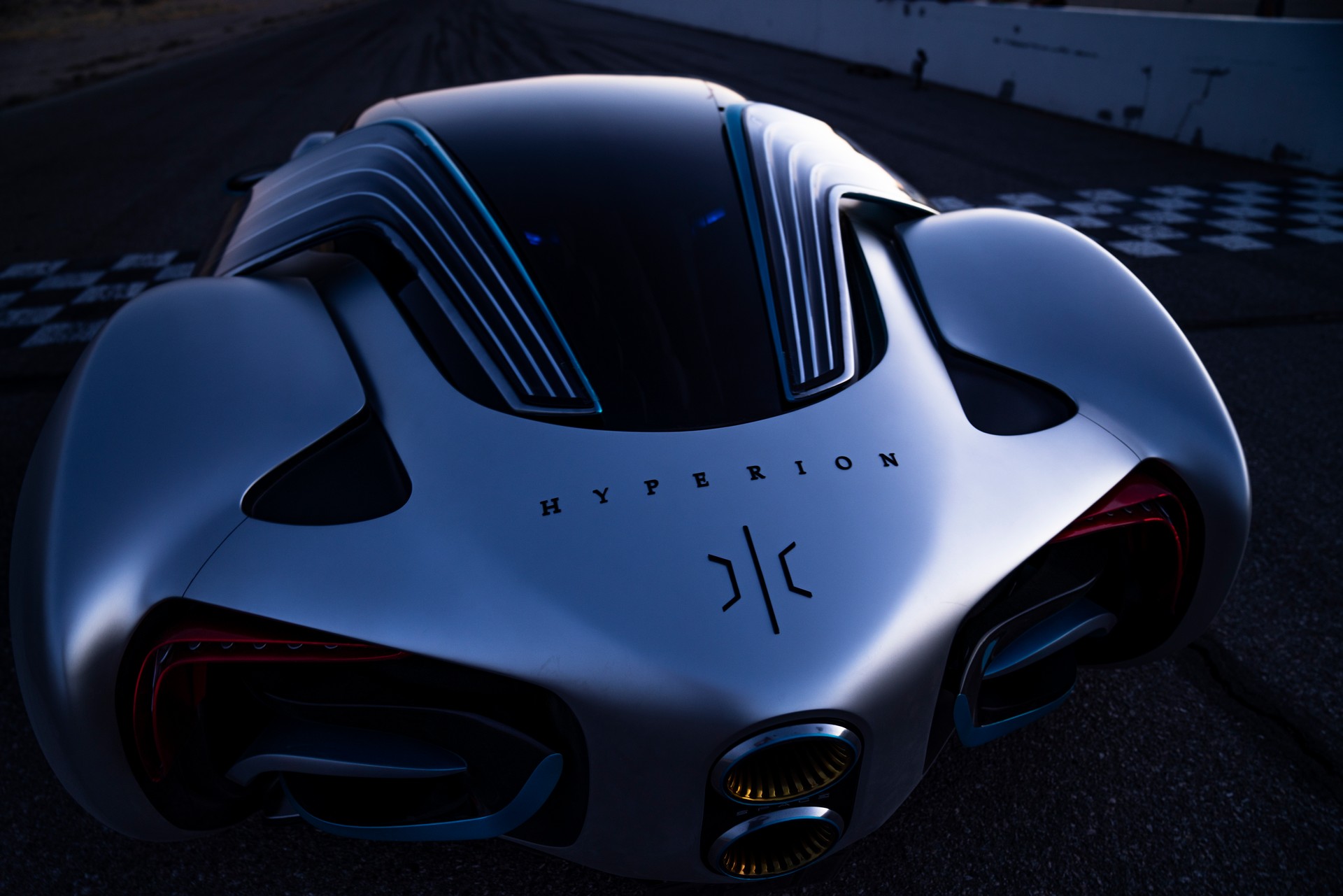Remember the hydrogen-powered Hyperion XP-1 which made headlines in August 2020 with its impressive specs? Well, the first model from the California-based startup made its public debut at the Los Angeles Auto Show, still looking like a vehicle built by an alien civilization.
The Hyperion XP-1 is still in prototype form and features no styling changes compared to the renderings we saw more than two years ago. It admittedly looks even weirder in person, with unconventional proportions, complex intakes, and pieces sticking out of the bodywork, including the Bugatti-style adjustable blades which are covered in solar panels.
Read: Which Of These 10 Startup Supercars Do You Think Will Actually Reach Production?
The Hyperion XP-1 promises 1,016 miles (1,635 km) of range when the carbon-fiber hydrogen tanks are filled up, a process that takes less than five minutes. The powertrain includes hydrogen fuel cells, supercapacitors instead of batteries, a three-speed transmission, and four axial-flux electric motors sending power to all four wheels. The combined power output exceeds 2,000 hp allowing a 0-60 mph (0-100 km/h) acceleration in 2.2 seconds and a top speed of 221 mph (356 km/h).
According to Hyperion, the XP-1 tips the scales at 2,275 lbs (1,032 kg), which is significantly lower than most electric hypercars, thanks to the carbon titanium monocoque structure, the aluminum alloy suspension, the titanium-reinforced composite bodywork, and of course the absence of a massive battery pack.
As it was announced back in 2020, Hyperion wants to build 300 units of the XP-1 in the US, with pricing set to be announced at a later date. The original goal was for production to commence in 2022 but we guess that this has been postponed. Last year, a camouflaged prototype of the hypercar was tested in Las Vegas. Hyperion is already accepting reservations through a special form on its official website.
Besides the Hyperion XP-1, the company which supplies hydrogen propulsion systems to other firms announced the “XF-7 Hyper:Fuel” power stations using NASA technology to refuel both FCEVs and BEVs. The stations will also be capable of providing “utility grid support for emergency and backup power applications”.






















